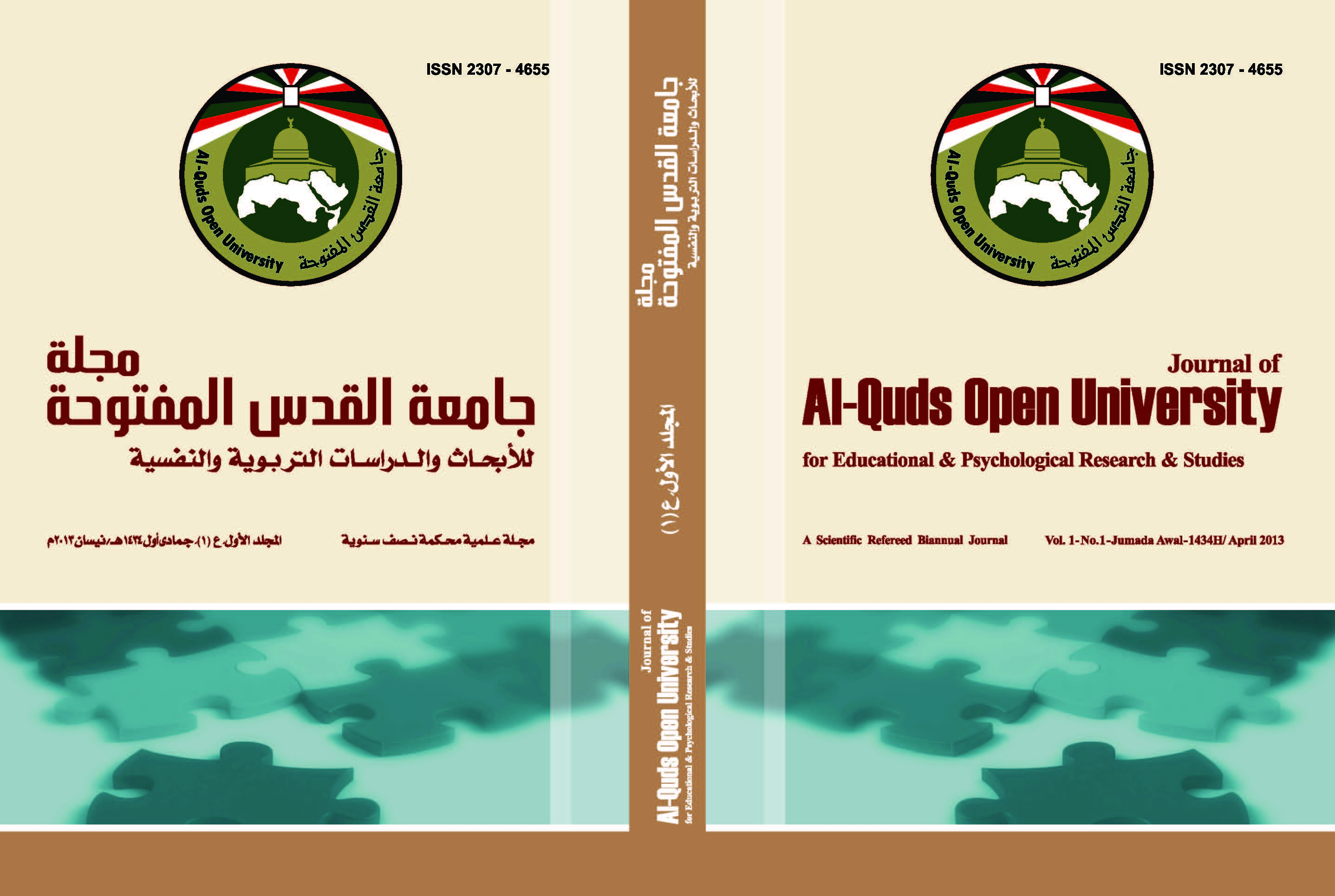The Impact of Using The Roundhouse Diagram Strategy on the Education and the Attitudes of the 10th Grade Students in Physics (Energy in Our Life) at the Governmental Schools in Nablus.
Keywords:
The Roundhouse Diagram Strategy, Attitudes of the 10th Grade, Physics, NablusAbstract
This study aimed at investigating the impact of using the Roundhouse
Diagram Strategy on immediate and postponded scientific achievement
and attitudes of (10th) grade students in physics (Energy in our life) in
governmental schools in Nablus governorate.
To answer the questions of the study and test its hypotheses, the
researcher conducted this study on the subjects of the study which consisted
of (141) males and females in public school in Nablus. The students of the
study were distributed into four sections. Two sections, one for males and
one for females, were chosen randomly and these two sections represented
the experimental section.
The study findings were: There were significant statistical differences
between the achievement and attitudes in the students’ means towards
learning physics and towards the physics teacher in the experimental and
control groups in favor of experimental groups. There were no significant
statistical differences between achievement, and attitudes of the students’
means towards the physics and towards physics teacher, due to time. There
were significant statistical differences between the achievement, and attitudes
of the students’ means towards physics and towards the physics teacher due
to gender, in favor females.
In accordance with the findings of this study, it was recommended to
encourage teachers’ adoption for the Roundhouse Diagram Strategy method
for its effectiveness. It is always recommended for researchers to conduct
further studies concerning the Roundhouse Diagram Strategy teaching method
Downloads
Published
How to Cite
Issue
Section
License
- The editorial board confirms its commitment to the intellectual property rights
- Researchers also have to commit to the intellectual property rights.
- The research copyrights and publication are owned by the Journal once the researcher is notified about the approval of the paper. The scientific materials published or approved for publishing in the Journal should not be republished unless a written acknowledgment is obtained by the Deanship of Scientific Research.
- Research papers should not be published or republished unless a written acknowledgement is obtained from the Deanship of Scientific Research.
- The researcher has the right to accredit the research to himself, and to place his name on all the copies, editions and volumes published.
- The author has the right to request the accreditation of the published papers to himself.







2.png)






_2.png)

